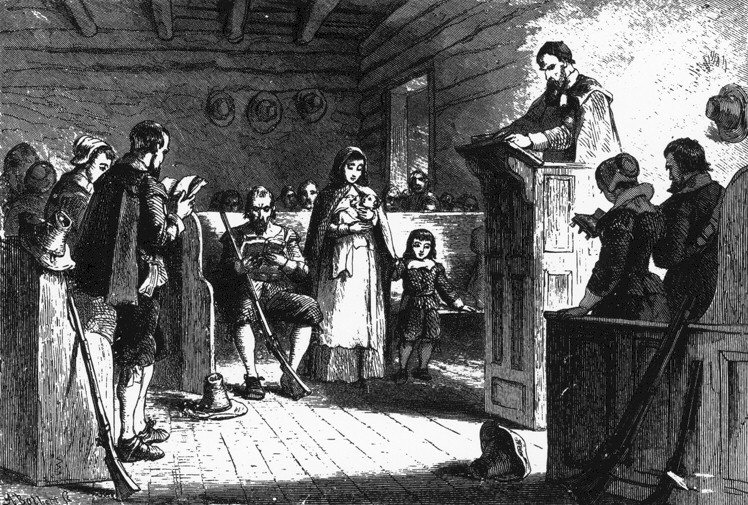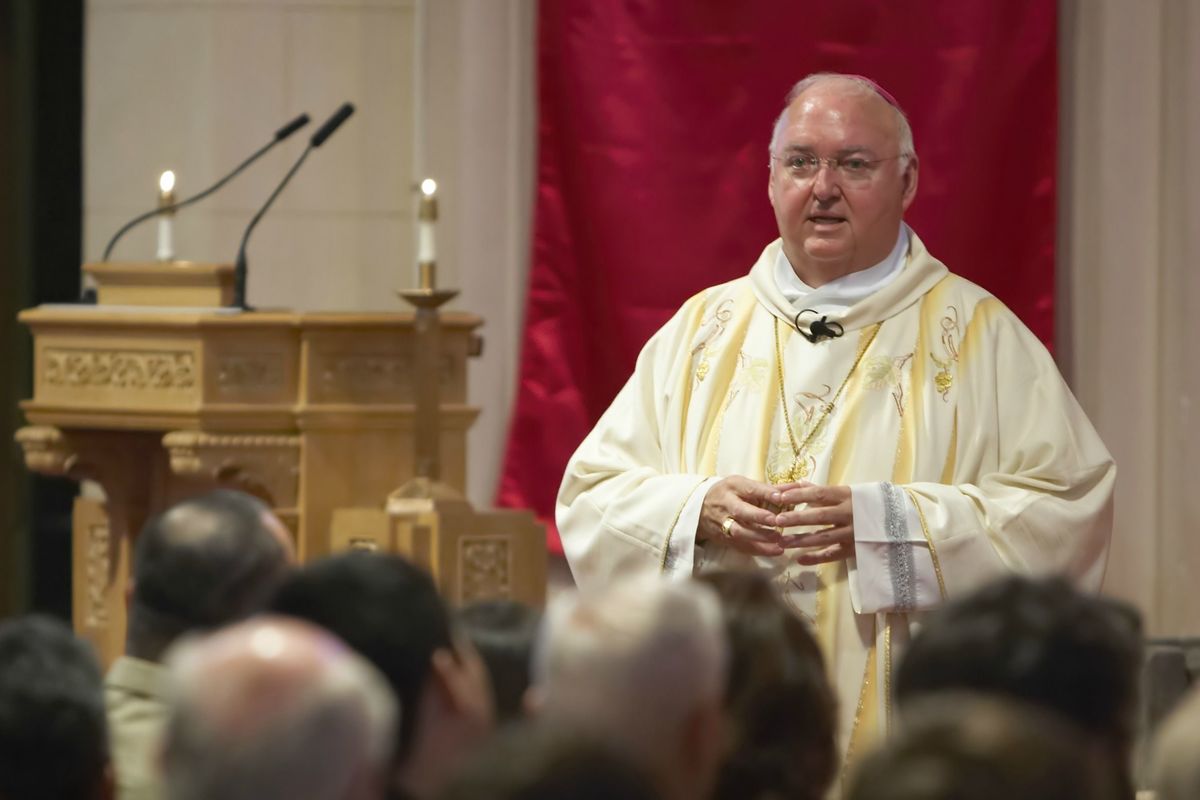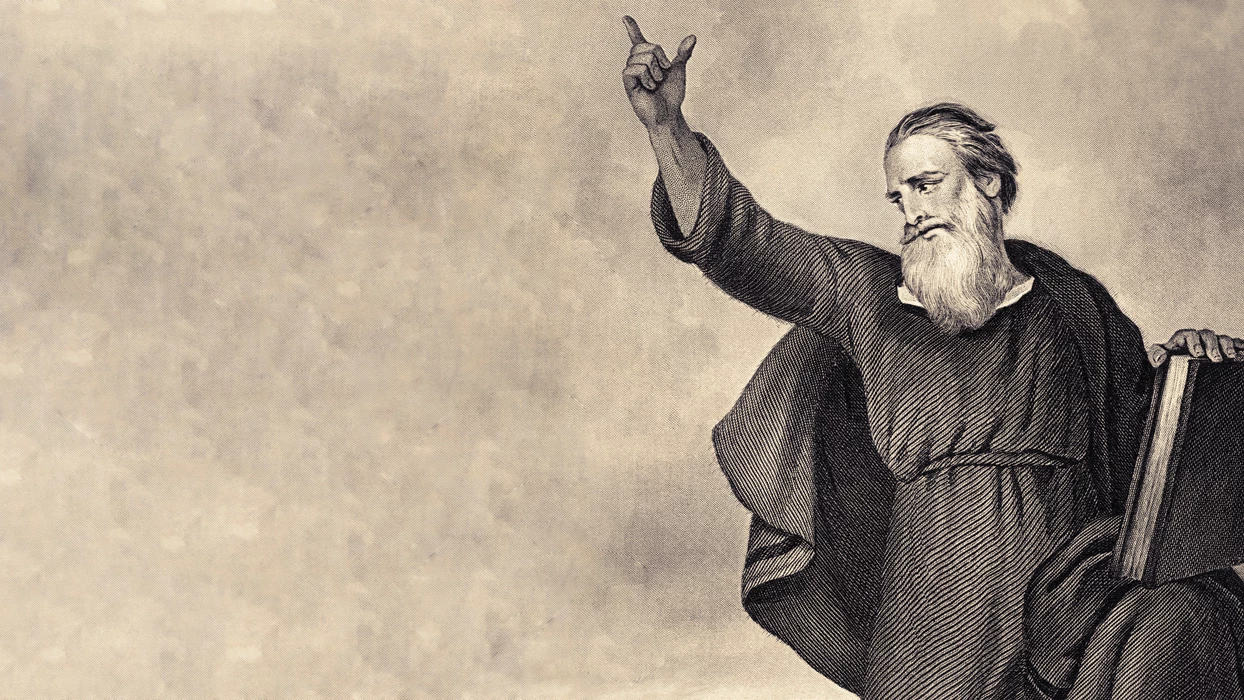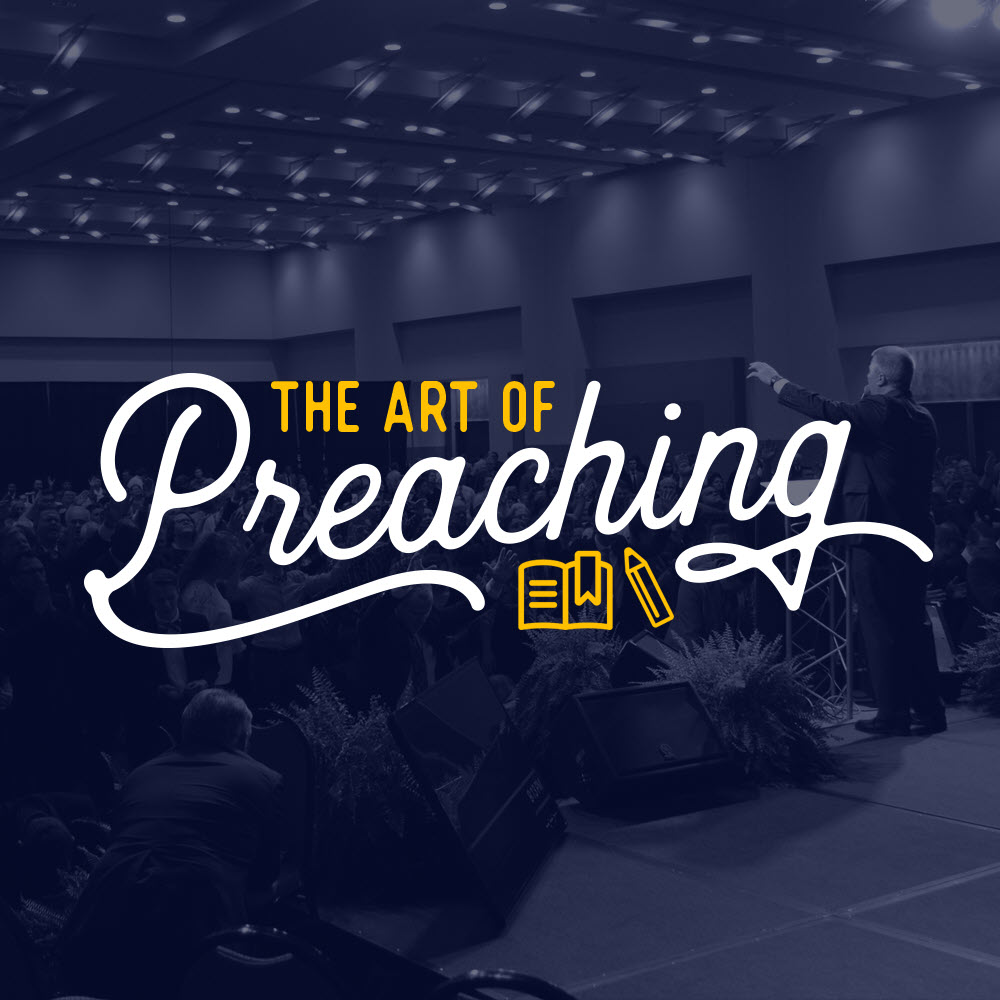Puritan Preaching – Ralph G. Turnbull

No one living and ministering in the English-speaking world can afford to dismiss the influence of Puritan preaching. It is part of the inheritance of all who would proclaim the everlasting gospel in our generation. The themes and emphases, the style and skills, are woven into the fabric of our tradition. If this age does not have a Puritan preacher in the historical sense, overtones of Puritan preaching are still to be heard and a rich evangelical faith is still being expressed. These would remind us that we are the heirs of a glorious legacy of preaching.
-
BACKGROUND
The word “Puritan” came into use in England during the period of 1559–1567. There were those in the life of the churches who sought to purify what was to them defection and debasement of doctrine and morals. The Reformation had become an accepted fact with all its variety of expression on the continent of Europe. The Lutheran strain influenced many and the Calvinistic view was eagerly welcomed by others both on the Continent and in Great Britain. From Calvin’s Geneva came views of the Bible and the Christian life which permeated English and Scottish churches. These intermingled with already existing interpretations common to the post-Reformation period. William Tyndale and others in England influenced Episcopal, Presbyterian, and Independent groups. John Knox in Scotland had laid the foundation of church life which would withstand the test of centuries.
In the midst of the political-social struggle for the rights of men over against all tyranny and despotism, the religious ideas of faith and worship found expression. Here began the “gathered church” and the “federal or covenant theology.” Ever seeking a pure church the preachers of that day tried to spell out their convictions in sermons. At the heart of all preaching lay this element. “The covenant or federal theology was only an intellectual formation into which older English piety, practice and preaching was fitted” (cf. Trinterud). Thomas Cartwright of England was exiled to Holland and is known as “the father of Puritanism.” Holland received many refugees and was a link between the old world and the new by the coming of the Pilgrim Fathers to America. The one thing held in common was the need for theological learning in the Reformed tradition and “the liberty of prophesying” in the apostolic manner. Thus to expository preaching was given exegetical and prophetic discipline with evangelical application to the contemporary life.
-
PURITAN PREACHERS
- English Preachers. Those who stand out in this period are selective of a greater number. Their sermons and books represent a variety of expression. Woven into their message are the rich overtones of Augustinian theology, the influence of Calvin, the covenant theme, the allegorical interpretation of Scripture, and the favorite motif of the Pilgrim. The following are mentioned as samples of this emphasis: John Foxe (1517–1587), Thomas Cartwright (1535–1603), Richard Hooker (1553–1600), John Smyth (1554–1612), Lancelot Andrewes (1555–1626), William Perkins (1558–1602), Richard Sibbes (1577–1635), Thomas Goodwin (1600–1679), Richard Baxter (1615–1691), John Owen (1616–1683), and John Bunyan (1628–1688).
- Scottish Preachers. In association with England the Scottish churchmen held much in common but later came to separate. John Calvin held a special place in the esteem of Scottish preachers who copied his style and method. The exposition of Scripture, characteristic of Calvin at Geneva, held priority for many years. Theology and exegesis were always in company. Puritan preaching in Scotland held sway and so molded the life and thought of its people that even today the tradition persists in spite of major defections from its historic base. Those who stand out include the following: John Knox (1505–1572), Andrew Melville (1545–1584), Samuel Rutherford (1600–1661), William Guthrie (1620–1665), Alexander Peden (1626–1686), Richard Cameron (1648–1680), James Renwick (1662–1688), and Thomas Boston (1677–1732).
- New England Preachers. The Pilgrim Fathers in coming to the shores of the new world brought with them the Puritan heritage of preaching. Enriched as they were from their stay in Holland and their contact with the Low Countries of Europe they brought with them an emphasis which has never died away. Outstanding among the preachers of the new world are the following: Thomas Shepard (1605–1649), Roger Williams (1603–1683), Francis Makemie (1654–1708), Cotton Mather (1663–1728), William Tennant (1673–1746), Theodorus J. Freylinghuysen (1691–1747), Jonathan Edwards (1704–1758), and John Witherspoon (1722–1794).
- In the Puritan Tradition. Puritan preaching has its historical background and its influence largely in the seventeenth century. Thereafter it continued to recede in Great Britain but continued much longer in America. Looking back from this era we can trace its revival from time to time.
In the British Isles there was Charles Haddon Spurgeon (1834–1892), whose lifetime was characterized by a ministry unparalleled in modern days. Converted at sixteen years of age, he became a preacher at twenty-two, and continued unabated until his death. For two generations he ministered at the Metropolitan Tabernacle, London. He was a Baptist by persuasion, but in spirit and style of preaching he was a Puritan. His vast library (one of the largest of private libraries then) of thousands of volumes was exceedingly rich in Puritan literature. He reveled in their writings and fed his soul at their fountain. His voice had singular charm and beauty. His preaching was direct and personal. Taken down in shorthand, his sermons were printed and circulated by the million. His unquestioned belief in the inspiration and integrity of the Scriptures gave him a power and influence in his day beyond that of any other preacher.
Alexander Whyte (1836–1921) of Scotland rose from obscurity to be the best known preacher of his country. High honors were bestowed upon him, such as the Moderatorship of the Church and Principal of New College, but he remained throughout a humble spirit, a pastor, and a preacher. He was known at his death as “the last of the Puritans.” This recalls his vivid imagination, his stress on the conscience, his preaching of sin and judgment, and the grace of God ready to remake character. He preached experimentally, unveiling sin. Imaginative reason fired his utterance. The Bible and Bunyan were always at hand, and his heart was steeped in the writings of Thomas Goodwin as well as the other major Puritans.
Clarence E. Macartney (1879–1957) of Pittsburgh, is the one of recent years who recalled something of the Puritan preaching. He toiled strenuously in sermon preparation and when he preached without notes he poured forth from a well-filled and well-stored mind. His grasp of history and of human nature, his Bible knowledge, and his passionate evangelistic thrust showed that he was a Puritan of his age in America. By some sixty books he has left his legacy for all to read. Although he did not expound in detail the Scriptures as the early Puritans, his proclamation of “the grand particularities of the faith” revealed the shepherd heart and the evangelistic spirit. The simplicity, sincerity, and gravity of his utterances reminded a generation that the Puritan spirit was still among us.
-
STYLE
The genius of Puritan preaching, whether that of the seventeenth century or later, lay in its simple, unadorned, plain style. As Jonathan Edwards put it in his book of Resolutions: “Never to speak in narrations anything but the pure and simple verity.” In his Manductio ad Ministerium, Cotton Mather taught that, “after all, every man will have his own style.” This text was used by Puritans as well as that of William Perkins, The Art of Prophesying (1592). The latter taught: “Human wisdom must be concealed, whether it be in the matter of the sermon, or in the setting forth of the words: because the preaching of the word is the testimony of God, and the profession of the knowledge of Christ, and not of human skill: and, again, because the hearers ought not to ascribe their faith to the gifts of men, but to the power of God’s word.… If any man think that by this means barbarism should be brought into pulpits; he must understand that the minister may, yea and must privately use at his liberty the arts, philosophy, and variety of reading, whilest he is framing his sermon: but he ought in public to conceal all these from the people, and not to make the least ostentation … it is also a point of Art to conceal Art.”
Other works of that period included The Marrow of Sacred Divinity (1638), by William Ames, a standard text used at Harvard and Yale until the middle of the eighteenth century. In it the plain style is defended. Others who wrote for their fellow Puritans included Richard Bernard of Cambridge, England. The Faithful Shepheard (1607) by him is a popular treatise on the whole duty of the preacher, describing the proper conduct of life, the learning required, as well as the method and style to be observed in the sermon, and an eloquent insistence upon the glorious function of the pulpit. Thomas Hooker, in The Soules Preparation (1632), warned against the evil of consequences of a too ornate sermon style: “I have sometimes admired at this: why a company of Gentlemen, yeomen, and poore women, that are scarcely able to know their A.B.C. yet have a Minister to speake Latine, Greeke, and Hebrew, and to use the Fathers, when it is certain they know nothing at all. The reason is, because all this stings not, they may sit and sleepe in their sinnes, and goe to hell hoodwinckt, never awakened.”
Richard Sibbes, one of the greatest of Puritan preachers in England, wrote about style. In writing the Preface to John Smith’s Introduction to The Creed, he stressed: “This good man’s aim was to convey himself by all manner of ways into the heart, which made him willingly heard of all sorts; for witty things only, as they are spoken to the brain, so they rest in the brain, and sink no deeper; but the heart (which vain and obnoxious men love not to be touched), that is the mark a faithful preacher aims to hit. But because the way to come to the heart is often to pass through the fancy, therefore this godly man studies by lively representations to help men’s faith by the fancy. It was our Saviour Christ’s manner of teaching to express heavenly things in an earthly manner and it was the study of the wise man, Solomon, becoming a preacher, to find out pleasant words, or words of delight, Eccles. 12:10.” William Chappell, The Preacher and The Art and Method of Preaching (1656) found that his book was used for several decades before the settlement in New England by the leaders of thought. He stressed “the only legitimate order of the sermon” and gave impetus to the plain style.
The Puritan style then was modest, unadorned, and such as appealed to the lowliest in knowledge as well as reaching the well-educated. The sermon was an attempt to extract from a Biblical text an axiom of theology and to dispute of this in creedal order. In procedure the text was taken apart by the method of analysis into its constituent elements, and then set out again in a proposition. After the logical analysis of Scripture the practical appeal was made by the pastor-preacher. If the speech lacked adornment in pleasing phrases, nevertheless it was convincing, straightforward speech, and easy to be understood. Some preachers tried to be “witty” and used word-play and quips, whereas the “metaphysical” or intellectual emphasis was also intermixed. The Puritan might be fully aware of his skill in so speaking, but he was counseled to avoid these conceits of Elizabethen imagery.
The background of the Puritan preacher lay in the classics and the languages of Latin, Greek, and Hebrew. He was the best educated man of his day, acquainted with the best general literature then published. Outstanding in the field of literature was the King James Version of the Bible. The “simple and pure verity” of style was encouraged by the use of this monument of the English tongue. Its cadences and beauty of word and sentence, its surge and thunder of thought gripped the mind and molded the spirit. Puritans were steeped in the Bible. No one can estimate its profound influence upon the speech and ideals of a generation. The English tongue in its rugged Anglo-Saxon was then at its flowering and height of expression, making of the King James Version a monument of unsurpassed excellence. Nothing is comparable to it. From its reading and study came a lively selection of word and thought. Thus the Puritan style owed the most to this well of pure and undefiled English. Cogent, terse, and spiritual was the style which is known as the plain style.
-
EMPHASES
The “whole counsel of God” was expounded by the faithful pastor, but a recurring theme of three principal doctrines pervaded most of the sermons.
- The Sovereignty of God. Basic to all theological views lay this one truth. Reformer and Puritan held to a world view in which God was supreme. History was the outworking of divine providence and God was the architect of the ages. The Calvinism of Geneva and the Puritanism of England had this in common. The ever changing forms of government under which men had to live forced the church to think in terms of divine sovereignty. As Andrew Melville (1545–1622) of Scotland expressed it in the struggle for religious freedom, “there are two kings and two kingdoms in Scotland.” Melville was the architect of Scottish Presbyterianism and what he said summed up the truth for all Puritan preaching. Man was absolutely dependent upon God. Man’s freedom of will was accepted but God had the right to dispense his salvation to whomsoever he would.
- The Sinfulness of Man. The Puritan was aware of his sense of need. He stressed that man in himself lacked the ability to lift himself up. The heinousness of sin was ever before him. Man was forever involved in guilt and depravity. Such depravity implied that the whole person was tainted by sin and the whole of life was limited in what it could become—apart from the grace of God. The natural man could not understand the things of God. He needed spiritual enlightenment and renewal. This called for a supernatural work of God. The aim to convert sinful man found its thrust in the conviction of man’s moral inability and the prevalent belief in the doctrine of hell.
- The Grace of God. The end of preaching for the Puritan lay in the awakening of the soul to the knowledge of God’s grace and love in redemption. The sermon was no casual oratorical effort. It was a serious business to prepare and preach a sermon. Eternal destiny was wrapped up in its message and in its reception or rejection. Thus the sermon must stress the personal note and appeal to the individual.
Here was the wooing note in the Puritan whose preaching sought to bring in many to the kingdom of God. Hell-fire preaching was also present (perhaps to the extent of 10 per cent of the sermons), but God’s love could save and renew. The way of salvation was ever present and the appeal of the gospel was effective. In the mind of the Puritan was the conviction that the sermon was God’s agency of conversion. It is true that the faithful came to hear the voice of God that they might conform their lives to an ethical pattern of right and good. But the preacher had in mind those “without the camp,” and to them he came with earnest concern for their souls. They too were to be won for the kingdom of God.
-
STRUCTURE
Puritan preaching was not an artificial product, hurriedly put together. Solid, serious thought and writing prepared the way for the sermon to be preached. The writing habits of the Puritan are well-known. W. F. Mitchell, English Pulpit Oratory from Andrewes to Tillotson, has opened up this phase in research. There was a well-defined standard in vogue. First, the text is stated, then the doctrine is stated in a proposition. For example, Jonathan Edwards of New England, following his Puritan mentors, in the sermon “Sinners in the Hands of an Angry God” begins with an Introduction which had four points. Then he outlined the Proposition which contained ten divisions in logical order. This was the body of the sermon. Finally came the Application which included an Improvement, Illustrations, and Inferences. It is interesting to note that in this sermon there are four pages of Exposition and five pages of Application.
Structure then had an unfailing regularity of outline and development. Divisions are named; points under each one are numbered; objections are stated and answered. The sermon was a closely reasoned outline of theological thinking. Usually there was a searching application with practical insights regarding life and conduct. If the sermon did not begin with any “life situation” common today, it certainly found its climax in the situation to be met in that day. The sermon was usually written and then read, but many Puritan preachers were not tied to their manuscript, preferring to have freedom of utterance in the pulpit and often in the open air.
The stress upon one idea was characteristic. One truth and not several were dealt with in the main stream of Puritan homiletics and preaching. The main theme was repeated throughout the body of the sermon for emphasis. There was unity of thought and orderliness of movement, with each division adding to the development of thought. Truth was interpreted on the basis of careful exegesis. The text and its doctrine determined the theme. Undiluted exposition and clear divisions marked the work of the preacher. There was little “surprise” element in the sermons. Because of the Puritan style, the witty or clever sermon was not to be found alongside the plain style. Structure followed the well-chosen method already laid down by the homiletical and hermeneutical teachers. While the strong structure made for easier recollection on the part of the listener, the sermons tended to be unvaried, repetitious, and lengthy. However, in that period the pulpit had no competitors and the sermon was the highlight of the week. An expectant and ready congregation came to hear “acceptable words.”
-
IDEALS
The ideals of the ministry held by the Puritan were high. He did not come to his calling lightly. To be called of God as “a messenger of the Lord of Hosts” was no light thing. No Puritan minister wished to be thought of as an hireling, for God had given him a unique place among men as the mouthpiece of God. As he labored within the context of his parish he was accorded respect and given a hearing. By reason of his education he usually stood above the rest of the community. And his status as a pastor or minister of the Word of God gave him a special place in the minds of his auditors. Generally an evangelical conversion experience was the background out of which a man received the call to this holy task. Whether in the Episcopal or Presbyterian order this was so. Similar convictions existed in the Independent groups with their “prophesyings.”
The ideal for the Puritan preacher is set forth by Jonathan Edwards in his Works, I: “Take care … that he be a man of thoroughly sound principles, in the scheme of doctrine which he maintains. Labor to obtain a man, who has an established character, as a person of serious religion and piety. If you should happen to settle a minister, who knows nothing truly of Christ, and the way of salvation by Him, nothing experimentally of the nature of vital religion; alas, how will you be exposed as sheep without a shepherd. You will need one that shall stand as a champion in the cause of truth and godliness.” The picture of the Puritan has also been idealized in the inscription on John Bunyan’s statue at Bedford, England, which reads:
A very grave person:
Eyes lifted up to heaven.
The best of books in his hand.
The law of truth was written upon his lips.
The world was behind his back.
He stood as if he pleaded with men.
A crown of gold did hang over his head.
Puritan preaching is to be assessed in the light of the times when in state and in church there was tension and purifying of ideals and convictions. The shepherd heart was the basis of the preacher’s concern. As Jonathan Edwards described it when the Puritan movement had well-nigh spent itself in New England, “I have given myself to the work of the ministry, labouring in it night and day, rising and applying myself to this great business to which Christ appointed me. I have found the work of the ministry among you to be a great work indeed” (Works, I).
Puritan preaching also expressed the conviction that the man of God was not only the pastor of a local congregation, but also that he was espousing the cause of the church of Christ in general. The evangelical and reformed spirit was also linked to a universal view of the church. Their sermons and writing are finding a place today as we rediscover their enduring value and abiding standards.
BIBLIOGRAPHY
Brown, J., Puritan Preaching in England, 1900.
Bunyan, J., Works.
- F., The Marrow of Modern Divinity, 1645.
Grierson, H., Cross Currents in English Literature of the Seventeenth Century.
Haller, W., The Rise of Puritanism, 1938.
Miller, P., The New England Mind—The Seventeenth Century, 1939.
Milton, J., Poetry and Works.
Perkins, W., The Art of Prophecying, 1631.
Turnbull, R. G., Jonathan Edwards the Preacher, 1954.
Works by Sibbes, Charnock, Gill, Goodwin, Preston, Mather, Edwards.
Turnbull, R. G. 1967. Puritan Preaching. In R. G. Turnbull (Ed.), Baker’s dictionary of practical theology. (R. G. Turnbull, Ed.) (34). Baker Book House: Grand Rapids, MI



